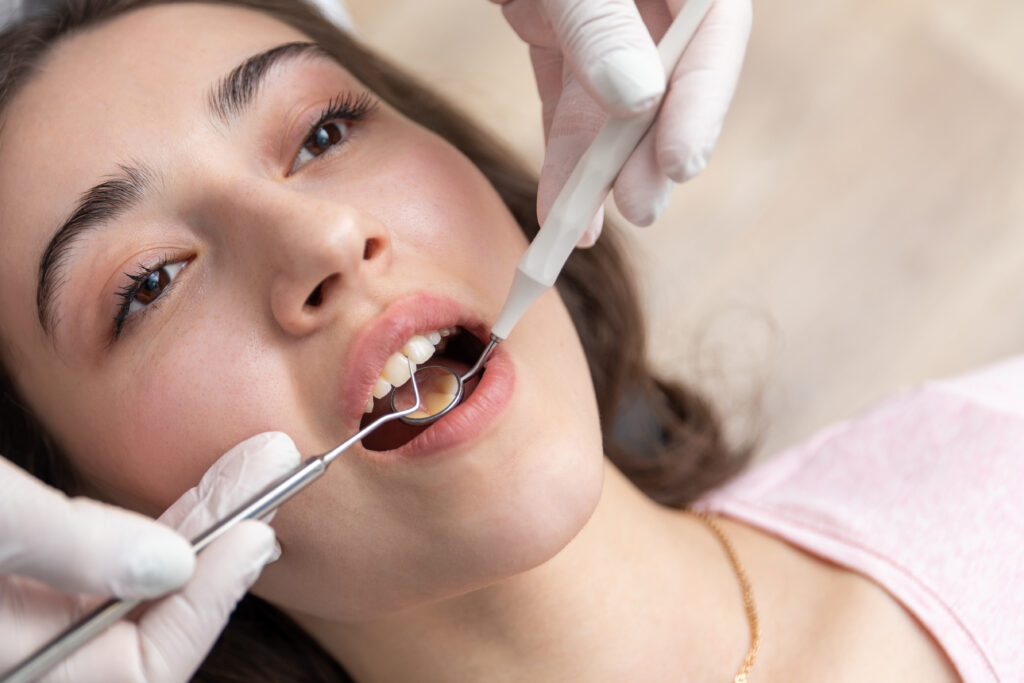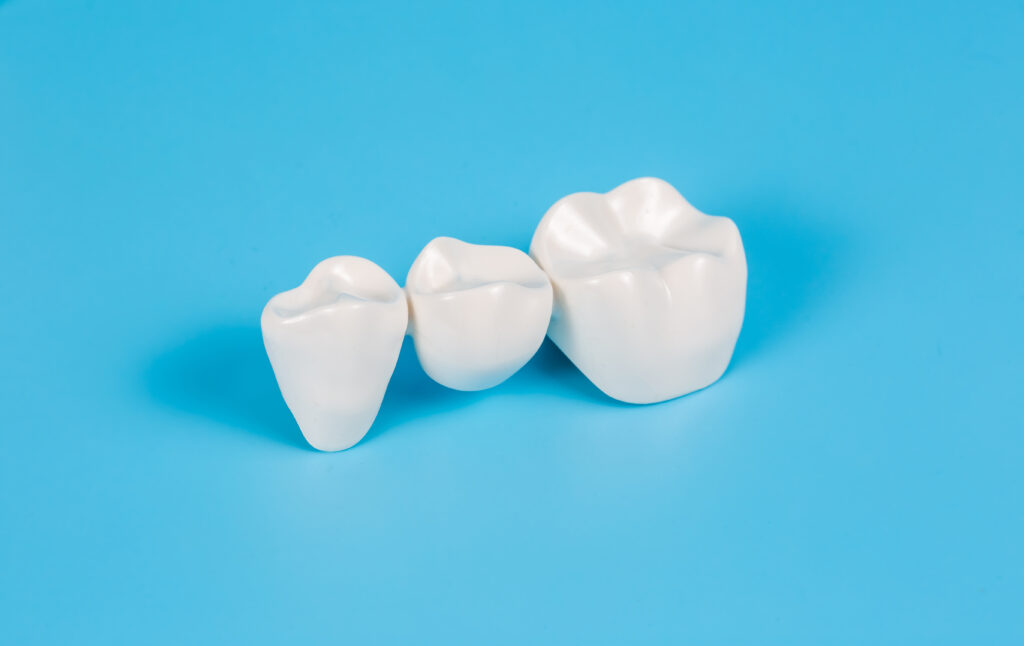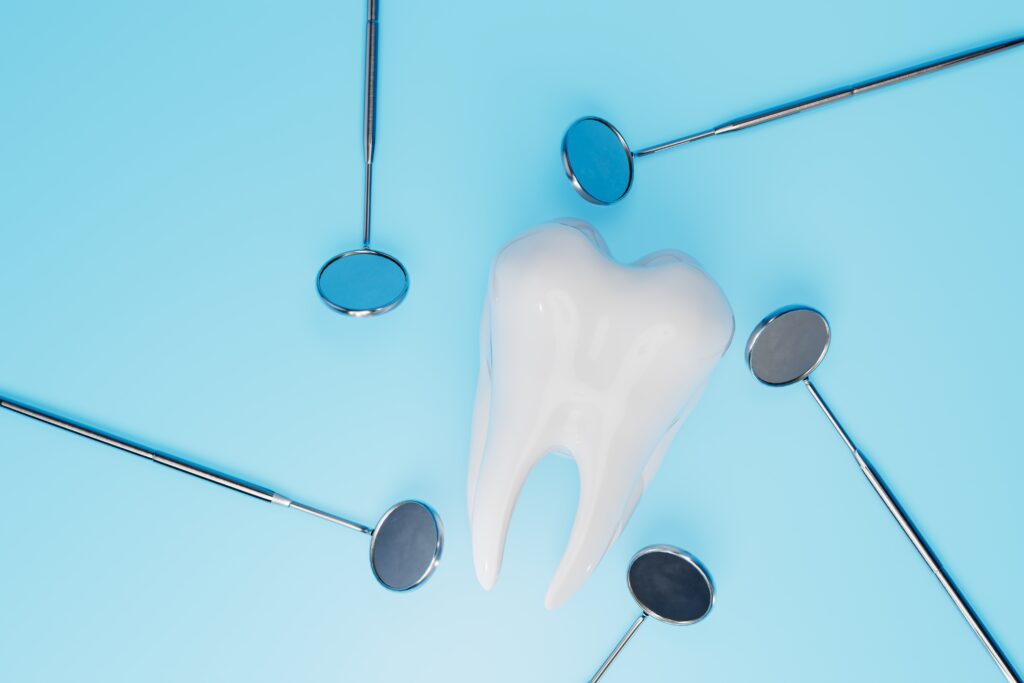Services
INVISALIGN – “Invisible Braces”
Invisalign is a way to straighten your teeth without braces. It uses a series of hard plastic, computer-designed mouth guard-like trays, each giving incremental movement towards the desired result.
If you’ve wanted to straighten your teeth, but haven’t wanted braces, you may want to look into Invisalign. Total treatment time averages 9-15 months and the average number of aligners worn during treatment is between 18 and 30, but both will vary from case to case.
If you have any questions, concerns, or would like to schedule an appointment, please contact us today. We look forward to providing you with the personal care you deserve.


CLEANING & PREVENTION – Exams, X-rays, Home Care
Your first visit to our office will include a thorough dental exam by the dentist to order to make an initial assessment. A preventative plan will be put into action, where you will come in for regular check-ups that will include:
• Adult Cleaning and polishing: The cleaning will consist of removal of tartar, which has hardened on the teeth over time, along with the sticky plaque that has formed over the teeth. Plaque is a formation of bacteria and build up that will eventually cause inflammation. The instruments and technique we use will safely remove this build up. Followed up by polishing that removes stains and further removes anything that may have been missed in the cleaning.
• Gum evaluation and treatment: Your gums and the bone supporting the teeth will be checked for disease.
• Oral cancer screening: The lips, tongue, throat, neck and gums are examined for any possible signs of oral cancer.
• X-rays: A full set of SAFE x-rays are performed and are crucial for giving the dentist information that is not always seen in the exam such as bone loss, development deviations, abscesses, teeth coming in at the wrong position, tumors and other issues hiding within the teeth and gums. Early detection is important in treating many oral health issues.
• Investigation of existing work: Checking current crowns, bridges, fillings, etc. are done to check for any damage or need for replacement.
https://www.facebook.com/charmoydentalassociates/



COSMETIC DENTISTRY – Fillings, Crowns, Zoom! Whitening, Veneers
Cosmetic Dentistry can make your smile light up a room!
• Zoom! Whitening: Over time and abuse such as smoking, consumption of coffee and other dark beverages and just normal wear and tear, teeth may lose their luster and begin to appear yellowed or stained. Whitening is an inexpensive and safe option to bring back their brightness. Whitening has become a very popular procedure for enhancing smiles, since patients can expect their teeth to look about two shades whiter than what they started with.
Home whitening kits are typically the preferred way of whitening. With this option, the patient is responsible for using consistently until they see the desired whiteness. Impressions are made of teeth so that the trays are custom fit for the patient. The whitening solution will be put into these trays and worn for specific periods of time. Wearing the trays periodically usually requires maintenance, once desired whitening is achieved.
• Crowns: There are times when your Randolph dentist will recommend crowns. A crown or cap is basically porcelain covering that is placed over the tooth surface, restoring strength and appearance. Crowns are needed in instances such as when a filling is not enough to give tooth proper structure, to fix fractures, or lend support for bridges. Crowns improve the appearance and structure of the tooth.
Keep in mind that crowns typically consist of two appointments. Impressions are made in order to create the custom crowns. For placement, the tooth will be numbed in order to remove any existing decay and to shape what is left of the tooth for attaching the new crown. A temporary crown will be placed on the tooth to protect it while the new one is being made. It is important that great care be taken with the temporary to avoid loosening. When the new one arrives, the patient will return to the office for placement and fitting. Sensitivity may be experienced with the new crown, but should subside over time.
• Veneers: Porcelain veneers are a beautiful option for creating the smile you’ve always wanted. Natural teeth that have spaces, are stained, crooked, misshaped or chipped, are some of the reasons veneers will be recommended. Veneers consist of very thin sheets of porcelain that are attached to the front of the teeth, improving shape, size and color.
On the first step of the process, the existing teeth are buffed and shaped and an impression is taken. The specific color that will be used is also chosen. On the second step, bonding adhesive will be used to attach the veneer to the teeth and a light beam will set the adhesive. No anesthetic should be needed, unless the patient is very sensitive. Veneers are durable, but care needs to be taken as far as chewing on things that may shift the veneers. Ongoing care is similar to that of natural teeth.
• White Fillings: Back in the day, silver or gold fillings were used. Now we know that composite can be used, which is made of quartz resin, white and more natural looking. The fillings are used to fix teeth that have been damaged by decay and fractures. The impaired portion of the tooth will be removed and that portion will be replaced with composite filling. They are attractive since they match existing teeth and will last for years to come.
Fillings can be done during one appointment and are shaped and smoothed to ensure tooth is its authentic look and feel. Patients should be prepared to notice some temporary temperature sensitivity for a few days after fillings are done.
Don’t wait any longer. Call our Randolph Dentist today for an appointment 973-584-0008 and get closer to a healthy, beautiful smile!





PERIODONTAL DISEASE – Diagnosis, Treatment, & Care
What is Periodontal Disease?
Periodontal disease is something that effects a large portion of the population. It is basically a disease that causes pockets or spaces in the gum tissue, allowing bacteria to enter. The build up of plaque causes the gums to recede and form these pockets. Normal brushing cannot reach this build up and over time, and if it is not treated, the pockets continue to get deeper.
• Diagnosis: Gingivitis is the beginning stages of periodontal disease. Bleeding when brushing is a sign of this, as is inflammation and tenderness. A small probe will be entered between the tooth and gums to measure the depth of any pockets that may be present.
• Treatment: Gingivitis and periodontal disease must be treated to prevent further destruction of teeth, gums, bone, eventually even leading to tooth loss. Depending on the extent of the disease, a deep cleaning and scaling will be suggested and will typically be done with local numbing. When the build up has been removed from below the gum line, over time the tissue will heal, coming back stronger and causing the pockets to get smaller.
• Maintenance: Follow-up appointments will be recommended to keep an eye on healing progress. If improvement is not seen over time, a visit to a periodontist specialist may be in order. Medicated rinses, consistent flossing and using an electric toothbrush are some of the home treatments suggested as well.


RESTORATIONS – Implant Restorations, One-visit Root Canals, Caps, Dentures
Restoring your beautiful smile!
Preventative measures will always need to part of a general oral health plan. In circumstances where damage has already been done however, more intensive procedures may be needed to bring teeth back to their healthy appearance and operation. Our staff will keep you informed on the options that will relieve pain, repair damage, improve your bite and get you back to normal function and look.
• Implant Restorations: Dental implants are used to replace teeth that have been lost. Through a surgical procedure, these artificial roots and teeth are placed directly into the bone. Implants replace teeth, but also relieve pain, restore chewing ability and improve facial tissues in the process. They are natural looking, secure and durable, lasting for years to come.
Implants require a process that can take over a series of months to complete. After being placed into the bone, they must be given several months to heal and form into that bone. For proper fitting, several fittings and adjustments may be needed. Maintenance of your new implants are up to you; following directions and forming good habits for proper care to get the longest wear out of them.
• Root Canals: A root canal may be needed to relieve severe pain or sensitivity being caused due to intense decay. Many times an infection is present. The affected tissue needs to be removed, and the nerve canal reshaped and filled with a special material and finally sealed to help prevent future infection.
• Bridges: Another way to replace lost teeth, this permanent fixture is typically made of porcelain on top of metal that fits over existing teeth. Bridges are the solution to many of the same issues that implants are used for, and another option for patients, depending on their particular needs and circumstances.
A few different appointments are usually needed for adjustments and finally fitted and fixed permanently. They can last for years with proper care.
• Dentures: Dentures are a removable option to replace missing teeth. They can be full appliances or partial. Natural, existing teeth may need to be prepared for dentures to fit properly. Sometimes having to be first removed and given a chance to heal before new dentures are placed. Immediate dentures are prepared in advance and immediately put in once the teeth are removed. However, adjustments for comfort and fit may need to be made once healing takes place, again possibly taking several appointments.
After proper fit has been achieved, dentures may take some getting used to, but over time a patient’s smile is enhanced with easy-to-care for dentures.




